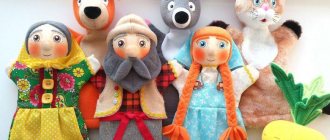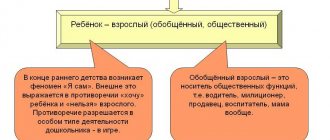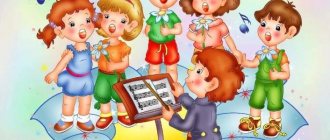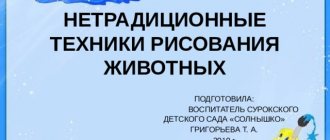Logopedic development of speech of a preschooler from 6 years old
This childhood age is characterized by a serious breakthrough in the development of coherent speech of the baby. Children communicate more actively, improve dialogue and monologue, and easily retell the plot of a favorite fairy tale or a conversation between loved ones.
Session with a speech therapist
The child participates in the speech process, develops answers to a particular question. The preschooler moves from using only descriptions in language, he reasons and analyzes more, monitors the culture of speech, and fully uses skills during daily communication.
Possible problems and developmental disorders
If a child who is about to enroll in school has problems with normal speech development, he should correct his speech, contact a professional speech therapist, and immediately start doing speech therapy exercises for children. You should sound the alarm if your child has the following difficulties:
- Speaks incomprehensibly, does not coordinate parts of speech, the doctor determines by ear the incorrect use of words and prepositions.
- Has a poor vocabulary.
- Expresses thoughts in very short sentences.
- Can't pronounce many sounds.
- He distorts words.
Note! Speech therapy does not forgive mistakes. The sooner you start corrective classes, the less time and effort you will need to spend on correcting shortcomings.
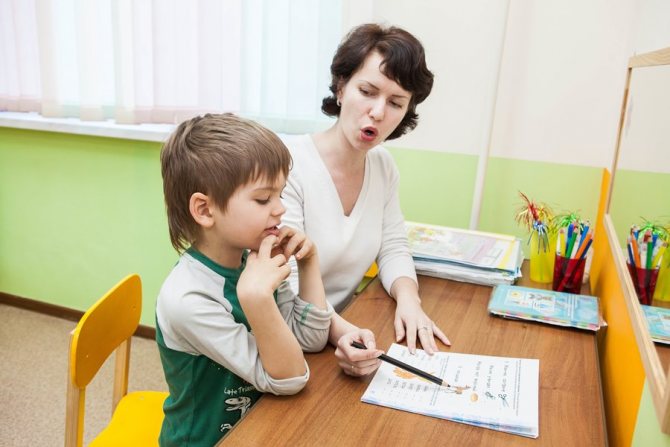
Lesson with a six year old child
Important! Since many speech problems are based on diseases of the central nervous system, in case of serious deviations it is important to be examined by a neurologist, as well as undergo the recommended therapy in combination with classes with a speech therapist and lessons at home with parents.
Program of individual speech therapy sessions “I will speak correctly”
Natalia Belyaeva
Program of individual speech therapy sessions “I will speak correctly”
Information card of the educational program
additional education for children.
Focus : Special pedagogical
Type of educational activity: Correctional and developmental
Program title : “ I will speak correctly ”
Information about the author: Belyaeva Natalia Mikhailovna
Teacher speech therapist
Program abstract :Children's age: 3-6 years
The duration of the program depends on the severity of the speech disorder.
Year of development: 2022
Target:
• Elimination of speech defects in children and prevention of possible difficulties in mastering school knowledge caused by speech underdevelopment.
• Mastery of speech as a means of communication and culture. Enrichment of active vocabulary, development of coherent, grammatically correct dialogical and monologue speech, development of sound and intonation culture of speech, phonemic hearing, formation of sound analytical-synthetic activity as a prerequisite for learning to read and write.
Tasks:
Depending on the child’s speech impairment (FN, FFNR, NVONR, ONR), the following tasks are solved:
•formation of full-fledged pronunciation skills;
•development of phonemic hearing, phonemic
representations, forms of sound analysis and synthesis accessible to age;
•improving the lexical and grammatical means of the language;
•development of independent, detailed phrasal speech.
The developmental aspect of the activity of teacher-speech therapist should include not only specific tasks for the development of speech processes in students with speech disorders, but also such tasks as:
•development of motivation to learn;
•development of self-control over one’s speech;
•development of mental processes that are interconnected with the development of speech function: visual and auditory-verbal attention, memory, perception; sensorimotor coordination, spatial orientation, visual and figurative thinking, elements of verbal and logical thinking.
Expected results.
As a result of speech therapy, the speech of preschoolers should be as close as possible to age norms. This is manifested in free, error-free command of dialogic and monologue speech. The phonetic format of speech must correspond to the norms of the native language. In addition, children must have sufficiently developed operations of sound-syllable analysis and synthesis .
The degree of actual development of these characteristics and the child’s ability to demonstrate them by the time of transition to the next level of education can vary significantly among different children due to differences in living conditions and individual developmental characteristics of a particular child.
Program status : Developed based on:
• “ Program of speech therapy work to overcome phonetic-phonemic underdevelopment of speech in children”, authors: T. B. Filicheva, G. V. Chirkina, T. V. Tumanova and others, “Enlightenment”
, 2009.
The program is recommended by the academic council of the State Scientific Institution “Institute of Correctional Pedagogy of the Russian Academy of Education”
.
• “ Program of speech therapy work to overcome general speech underdevelopment in children”, authors: T. B. Filicheva, G. V. Chirkina, T. V. Tumanova and others, “Enlightenment”
, 2009.
The program is recommended by the academic council of the State Scientific Institution “Institute of Correctional Pedagogy of the Russian Academy of Education”
.
Program approved:
I. Target section of the program
1.1. Explanatory note
The federal state standard of preschool education defines target guidelines - social and psychological characteristics of the child’s personality at the stage of completion of preschool education, among which speech occupies one of the central places as an independently formed function, namely: by the end of preschool education, the child understands oral speech well and can express his thoughts and desires. Speech is also included as an important component, as a means of communication, cognition, and creativity in the following target guidelines:
- actively interacts with peers and adults, participates in joint games;
- able to negotiate, take into account the interests and feelings of others, empathize with failures and rejoice in the successes of others, try to resolve conflicts;
- can fantasize out loud, play with sounds and words;
— shows curiosity, asks questions regarding near and distant objects and phenomena, is interested in cause-and-effect relationships (how? why? why, tries to independently come up with explanations for natural phenomena and people’s actions;
- has basic knowledge about himself, about the objective, natural, social and cultural world in which he lives.
In fact, none of the targets of preschool education can be achieved without mastering speech culture.
To achieve targets, systematic prevention and correction of speech disorders in children is necessary, since many of them have features that can disrupt the favorable course of speech ontogenesis, which is most clearly manifested by the age of five.
In connection with the growing trend of the appearance in mass kindergartens of a large number of children with speech impairments of varying severity, including children with severe speech impairments (ONR, SRD, dysarthria, the lack of specialized preschool educational institutions within walking distance on the one hand and the adoption of new federal educational standards for preschool education providing for the possibility of organizing and creating special conditions for children with disabilities, on the other hand, there is a need for the functioning of a psychological and speech therapy service analysis of the organizational and content aspects of the activities of a psychological and speech therapy service reveals that with a clear organization it can have a high the effectiveness of corrective, preventive influence, diversity in the choice of means and plays an important role in the speech and general preparation of children for school.
This program is of a correctional and developmental nature. It is intended for training and education of children 5-7 years old who have various disorders in the development of speech in their native language:
• phonetic disorders (simple and complex dyslalia, as well as pronunciation deficiencies caused by impaired structure and mobility of the speech apparatus - dysarthria, rhinolalia);
• phonemic underdevelopment;
• phonetic-phonemic underdevelopment.
The program is designed in accordance with:
Law of the Russian Federation “On Education”
;
Federal State Educational Standard for Preschool Education;
UN Convention on the Rights of the Child ;
Declaration of the Rights of the Child ;
Approximate general educational program for preschool education “Kindergarten 2100”
;
Instructive letter of the Ministry of Education of Russia dated December 14, 2000 No. 2 “On the organization of the work of a speech therapy center in a general education institution”;
Order of the Moscow Department of Education dated August 11, 2005 No. 2-34-20 “On the organization of work with children with speech impairments in state educational institutions implementing programs ”;
Regulations on the psychological and speech therapy service of the State Budgetary Educational Institution School No. 2072 of the preschool department;
Letter of the Ministry of Education of the Russian Federation dated June 27, 2003 No. 328-51-513/16 “Methodological recommendations for psychological, medical and pedagogical support of students in the educational process in the context of modernization of education.”
The program is written in accordance with modern scientific ideas about the mechanisms of formation of sound pronunciation in a child.
The theoretical basis of the program is the provisions on the relationship between correction and development, developed by L. S. Vygotsky, P. Ya. Galperin, B. D. Elkonin.
The program also reflected the ideas of a number of scientists: G. A. Volkova, L. S. Volkova, V. A. Kovshikov, R. I. Lalaeva, L. G. Paramonova, O. V. Pravdina , T. B. Filichiva, T. B. Chirkina, M. F. Fomicheva, M. E. Khvattsev, on the problem of oral speech correction.
The diversity and variability of the methods used makes it possible to provide a differentiated approach to the correction of speech disorders, to individualize the correctional and developmental process, to provide individual support for each child depending on the type and structure of the speech disorder, the presence of secondary developmental disorders, and the microsocial living conditions of the pupil.
The program is based on the following principles:
• systematic;
• complexity;
• active;
• ontogenetic;
• workaround;
• general didactic (visuality, accessibility, individual approach , awareness).
1.2. Planned results
Target guidelines formulated in the Federal State Educational Standard for preschool education.
Targets for preschool education represent social and normative age characteristics of a child’s possible achievements at the stage of completing preschool education.
Targets within the framework of the implementation of the work program to support children of senior preschool age with speech impairments.
As a result of speech therapy, the speech of preschoolers should be as close as possible to age norms. This is manifested in free, error-free command of dialogic and monologue speech. The phonetic format of speech must correspond to the norms of the native language. In addition, children must have sufficiently developed operations of sound-syllable analysis and synthesis .
II. Content section of the program
2.1. Goals, objectives, content and forms of speech therapy intervention .
Establishing the degree of severity and structure of a speech defect allows us to determine the purpose, objectives, content and forms of speech therapy intervention .
Program goals :
• Elimination of speech defects in children and prevention of possible difficulties in mastering school knowledge caused by speech underdevelopment.
• Mastery of speech as a means of communication and culture. Enrichment of active vocabulary, development of coherent, grammatically correct dialogical and monologue speech, development of sound and intonation culture of speech, phonemic hearing, formation of sound analytical-synthetic activity as a prerequisite for learning to read and write.
Depending on the child’s speech impairment (FN, FFNR, NVONR, ONR), the following tasks are solved:
- formation of full-fledged pronunciation skills;
-development of phonemic hearing, phonemic representations,
forms of sound analysis and synthesis accessible to age;
-improvement of lexical and grammatical means of the language;
-development of independent, detailed phrasal speech.
The developmental aspect of the activity of teacher-speech therapist should include not only specific tasks for the development of speech processes in students with speech disorders, but also such tasks as:
• development of motivation to learn;
• development of self-control over one's speech;
• development of mental processes that are interconnected with the development of speech function: visual and auditory-verbal attention, memory, perception; sensorimotor coordination, spatial orientation, visual and figurative thinking, elements of verbal and logical thinking.
The content of correctional and developmental work is aimed at creating conditions for eliminating speech defects and preventing possible consequences of speech defects.
Contents of correctional and developmental work:
• Work on the formation of sound pronunciation.
-Development of mobility of the articulatory apparatus.
-Introduction to sound articulation.
-Staging sounds that the child does not have.
-Automation of set sounds in speech (in syllables, words, phrases, sentences, text, sayings , poems, tongue twisters ). -Differentiation of mixed sounds (auditory)
.
• Work on the syllable structure of the word :
-Assimilation of words of different syllable structure and sound content.
• Work on the development of phonemic hearing, phonemic representations, accessible forms of sound analysis and synthesis.
-Recognition of sound against the background of sounds, syllables , words.
-Identification of syllables and words with a given sound.
-Reflective reproduction of rows of syllables and words .
-Determination of the rhythmic structure of a word.
-Formation of phonemic analysis: determining the place of sound in a word (beginning, middle, end)
; naming the sound that comes before and after a given sound.
-Development of synthetic activity: composing syllables and words .
-Development of phonemic concepts: selection of words for a given sound, syllable; selection of pictures for a specific sound; word transformation (add starting or ending sound)
.
Improving the lexical and grammatical means of the language.
-Formation of a system of inflection.
Practical acquaintance with the gender of nouns by substituting possessive pronouns my, mine, my (masculine, feminine and neuter gender)
.
Case constructions
Agreement of adjectives with nouns in gender and number.
Formation of the ability to distinguish the shading meanings of prefixes in verbs: u-, at-, from-, under-, on -, with-, for -, pere-, you- (flies, walks)
.
Agreement of nouns with numerals (one, one, two, two, three, four, five)
.
Agreement of adjectives and numerals with nouns.
Practical exercises in understanding and actively using prepositions : at, in, on, above, under, by, about, between.
-Formation of a word formation system.
Formation of nouns with diminutive suffixes: -k-; -ok, -ek, -ik; -check, -chick; -chk, -chk, -chk; -ts;-ushk-,-ishk-, -yshk-,-yushk.
Formation of adjectives with diminutive suffixes - onk-, - enk-.
Formation of nouns using the suffix - protsitsya - with the meaning of container (for soup - tureen, for herring - herring holder)
.
Formation of words with opposite meanings (antonyms from nouns, adjectives, adverbs, verbs)
.
Formation of singular and plural forms of nouns with suffixes denoting the names of cubs - onok, - enok, - ata, - yata.
Formation of relative adjectives (correlation with products, plants, seasonality, materials)
and their agreement with nominative case nouns in gender and number.
Formation of possessive adjectives from nouns.
• Development of independent, detailed phrasal speech.
— Formation of the syntactic structure of speech: learn to compose sentences. - Make sentences based on the supporting words given in the initial form.
— Colloquial-descriptive and narrative speech: combine simple sentences into a short story; compose stories based on a series of plot pictures; compose a story based on a plot picture.
In accordance with the Federal State Educational Standard, the main form of work with preschool children in all areas of development is play activity.
2.2. Directions of work in accordance with speech disorders of children.
The correctional and developmental work of a speech therapist with a specific student of GBOU Gymnasium No. 2072 includes those areas that correspond to the structure of his speech disorder.
Directions of correctional and developmental work to support children of senior preschool age with speech disorders.
Oral speech disorders
Directions of correctional work
Phonetic speech underdevelopment
— sound pronunciation correction.
Phonetic-phonemic underdevelopment of speech - correction of sound pronunciation.
— development of phonemic perception;
— improving the syllabic structure of words .
NVONR, ONR - sound pronunciation correction;
— development of phonemic perception;
— improving the syllabic structure of words ;
— improvement of lexical and grammatical means of the language;
- development of independent, detailed phrasal speech.
III. Organizational section of the program
a speech therapist’s activities throughout the year is determined by the tasks set by the work program .
3.1. Speech therapy diagnostics of a child’s speech development.
The work of a speech therapist teacher is based on the age and individual characteristics of children , the structure of speech disorders, the stage of correctional work with each child, as well as his personal and educational achievements.
Speech therapy diagnostics of the level of speech development of a child.
Type of diagnosis Speech therapy diagnostics of the level of speech development of a child
Examination form Illustrated test tasks taking into account the age and speech diagnosis of the child.
Source “Methodology for determining the level of speech development of preschool children” O. A. Bezrukova, O. N. Kalenkova.
Methods and parameters of recording Protocols for examining children’s speech, individual speech cards with recording of symptoms of speech disorders.
3.2 Form of organization of correctional and developmental work.
Speech therapy work is carried out in individual lessons .
3.3. Planning individual work .
lesson plan is based on 2 lessons per week . During classes there is a change in types of activities.
Software and methodological support for the correctional and developmental work of a speech therapist teacher
Programs:
• “ Program of speech therapy work to overcome phonetic-phonemic underdevelopment of speech in children”, authors: T. B. Filicheva, G. V. Chirkina, T. V. Tumanova and others, “Enlightenment”
, 2009.
The program is recommended by the academic council of the State Scientific Institution “Institute of Correctional Pedagogy of the Russian Academy of Education”
.
• “ Program of speech therapy work to overcome general speech underdevelopment in children”, authors: T. B. Filicheva, G. V. Chirkina, T. V. Tumanova and others, “Enlightenment”
, 2009.
The program is recommended by the academic council of the State Scientific Institution “Institute of Correctional Pedagogy of the Russian Academy of Education”
.
Technologies:
1. Speech therapy technologies for the formation of the pronunciation aspect of speech:
• Polyakova M. A. Self-instruction manual on speech therapy . Universal guide. M.:T. Dmitrieva, 2012.
• Spivak E. N. Speech material for automation and differentiation of sounds in children 5-7 years old. –M.: GNOM publishing house, 2012
• Tkachenko T. A. Speech therapy album . –Ekaterinburg: Litur Publishing House
, 2009
• Bogomolova A.I. Speech therapy manual for classes with children . –M.: Publishing school, 1996
• Dyakova E. A., Speech therapy massage . – M.: Academy, 2003.
•Pozhilenko E. L. The magical world of sounds and words. –M-L 1999
• Konovalenko V.V., Konovalenko S.V. Individual-subgroup work on correcting sound pronunciation and a set of notebooks on consolidating the pronunciation of sounds in preschoolers. – M.: Gnom i D, 2001.
• Tkachenko T. A. If a preschooler speaks . -S-P. 2000.
Development of phonemic awareness and sound analysis skills. Speech therapy notebook . - S-P. 1998
• Filicheva T. B., Tumanova T. V. Formation of sound pronunciation in preschoolers. -M, 1993.
• Bogomolova A.I. Speech therapy manual for classes with children . – St. Petersburg, 1994
• Fomicheva M. F. Educating children in correct pronunciation . – M, 1989.
• Reznichenko T. B. Larina O. D. We speak correctly (albums)
– M, 2003
• Zhikhareva-Norkina Yu. B. Home notebook for speech therapy sessions with children : a manual for speech therapists and parents : in 9th issue:. —M.: Humanitarian, ed. VLADOS center, 2005. - 136 pp.: ill. — (Correctional pedagogy)
.
• Paramonova L. G. Exercises for speech development. St. Petersburg, 1999.
2. Technologies for forming the syllabic structure of a word .
• Markova A.K. On overcoming violations of the syllabic structure of words in children suffering from alalia.
• Agranovich Z. E. Speech therapy work to overcome violations of the syllabic structure of words in children. - S-P. 2000
• Babina G.V. Safonkina N.Yu. Syllable structure of the word : examination and formation in children with speech underdevelopment. – Book lover, 2005
• Tkachenko T. A. Correction of violations of the syllabic structure of a word . - M., 2001.
• Bolshakova S. E. Overcoming violations of the syllabic structure of words in children. Moscow: Sfera, 2007.
•Kurdvanovskaya N.V. Vanyukova L.S. Formation of the syllabic structure of a word : speech therapy tasks . M.: Sphere shopping center, 2007
3. Technologies for enriching and activating vocabulary, forming the grammatical structure of speech:
• Zhukova N. S., Mastyukova E. M., Filicheva T. B. Overcoming SRD. - M. 1973
•Smirnova L.N. Speech therapy in kindergarten , M.: GNOM and D, 2001.
•Teremkova N. E. Speech therapy homework for children 5-7 years old with OHP (4 albums, - M. LLC "Publishing House GNOM and D"
, 2008
•Tkachenko T. A. Enriching vocabulary: notebook. –Ekaterinburg: KnigoMir
, 2011
•Bardysheva T. Yu., Monosova E. N. Notebook of speech therapy tasks . (notebooks for different age groups)
.
- M.: Publishing house "Scriptorium 2003"
, 2010.
•Nishcheva N.V. System of correctional work in a speech therapy group for children with ODD. – St. Petersburg, Detstvo-Press, 2001.
•Agranovich Z. E. Homework for overcoming lexical and grammatical underdevelopment in preschoolers with ODD. – St. Petersburg: Detstvo-press, 2001.
• Filicheva T. B., Chirkina G. V. Elimination of OHP in preschool children. Practical manual M., 2005.
• Filicheva T. B., Tumanova T. V. Children with general speech underdevelopment. - M. 2000.
•Tkachenko T. A. Formation of lexical and grammatical representations. Speech therapy notebook . - S-P. 1999.
• A set of games and activities developed by the teaching staff of kindergarten No. 1565.
• Aleksandrova T.V. Practical tasks on the formation of the grammatical structure of speech in preschoolers. - M. 2003
• Lalaeva R.I., Serebryakova N.V. Correction of general speech underdevelopment in preschool children. – S – PL 1999.
• Zhukova N. S., Mastyukova E. M., Filicheva T. B. Overcoming SRD. - M. 1973
• Filicheva T. B., Tumanova T. V. Chirkina G. V. Education and training of preschool children with special needs. – Bustard, 2009
•Zhukova N. S., Mastyukova E. M., Filicheva T. B. Overcoming general speech underdevelopment in preschool children. M., 1990
•Dateshidze T. A. System of correctional work with young children with PHH. St. Petersburg, 2004
4. Technologies for the formation of coherent speech:
•Smirnova L.N. Speech therapy in kindergarten , M.: GNOM and D, 2001.
•Bardysheva T. Yu., Monosova E. N. Notebook of speech therapy tasks . (notebooks for different age groups)
.
- M.: Publishing house "Scriptorium 2003"
, 2010.
•Arbekova, N. E. Developing coherent speech in children 4-5 years old with OHP. In 3 albums / N. E. Arbekova. - M.: GNOM Publishing House, 2012.
•Vasilieva S. A. Workbook on speech development. -M. 2002.
• Konovalenko V.V. Development of coherent speech. (Winter; Autumn; Spring)
- M. 2001
•Konovalenko V.V. Konovalenko S.V. Formation of coherent speech and logical thinking in children of senior preschool age with ODD. -M. 2003
• Tkachenko T. A. Speech therapy exercises for speech development. -M. 2001.
• Tkachenko T. A. Schemes for preschoolers to compile descriptive and comparative stories. -M. 1981
• Tkachenko T. A. Formation and development of coherent speech. Speech therapy notebook . -S-P. 1999
• Filicheva T. B., Chirkina G. V. Elimination of OHP in preschool children. Practical manual M., 2005.
• Filicheva T. B., Tumanova T. V. Children with general speech underdevelopment. -M. 2000.
• Filicheva T. B., Tumanova T. V. Chirkina G. V. Education and training of preschool children with special needs. – Bustard, 2009
5. Speech therapy technologies for teaching literacy:
•Buneev R. N., Buneeva E. V., Kislova T. R. On the road to the ABC (a manual in 4 parts, M.: Balass, 2003.
•Kuznetsova E. V., Tikhonova N. A. Steps to school: teaching literacy to children with speech disorders. – M., 1999
• Filicheva T. B., Tumanova T. V. Children with general speech underdevelopment. -M. 2000.
• Filicheva T. B., Tumanova T. V. Chirkina G. V. Education and training of preschool children with special needs. – Bustard, 2009
•Tkachenko T. A. Special symbols in preparing 4-year-old children for learning to read and write. –M., 2000
• Tkachenko T. A. Write, read! Early literacy methodology. Workbook. – M.: Eksmo, 2013
• Tkachenko T. A. First copybooks. Early literacy methodology. – M.: Eksmo, 2013
Individual correctional classes for preschoolers
For various reasons, the process of developing full pronunciation slows down for many children. Pronunciation defects will not be eliminated on their own; to eliminate them, you need systematic exercises with a specialist, as well as joint individual lessons at home.
A well-designed training system will definitely help. Individual speech therapy classes are conducted only after consultation and examination.
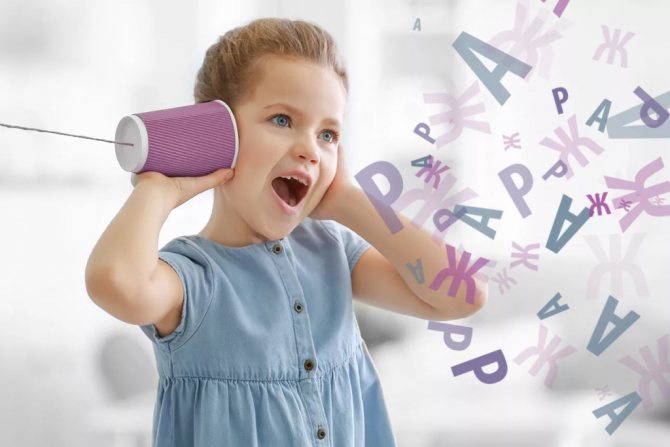
Speech therapy in the form of a game
General tips for practicing at home
After a detailed diagnosis of the speech of a preschool educational institution student, it is necessary to carry out correction and begin to engage in speech therapy tasks for children. Class time should not be more than 20 minutes. According to the theory of speech therapy, if you study more than you should, the material will not be fully absorbed.
In addition, speech therapists advise practicing while playing, since play is the main activity in the preschool period.
Note! Any speech therapy classes for correcting the pronunciation of sounds are built in the form of a game.
How to build a lesson
The child will learn the material better and will not get tired at all if the tasks are in the form of a game. In addition, when working with a kindergarten student at home, it is important to structure the process correctly:
- You need to start the exercises with 3 minutes, carefully increasing the exercise time to 20 minutes.
- Organize lessons correctly so that the child has a sincere desire to study.
- It is forbidden to force you to exercise - there will be no positive results from such exercises.
- You need to exercise often, but not for long.
- Do not criticize the child for failures (an important condition), do not shout, and treat with understanding.
Defectological assistance in educational institutions for preschool children
We need to analyze any situation, find the reason why it doesn’t work out, and try to solve it together. There are many types of speech therapy exercises. For example, the online editorial office of Shakhovskaya and Volkova offers activities and games.
Types of exercises for the speech apparatus
Each child is individual and has his own problems, so different types of exercises are used in practice. Speech therapy for speech development can consist of finger games, articulation gymnastics, games for imitation of sounds, hearing formation, logorhythmics (poems with movements), poems to enrich vocabulary to develop speech.
Breathing exercises in speech therapy help middle and high school students solve speech problems.
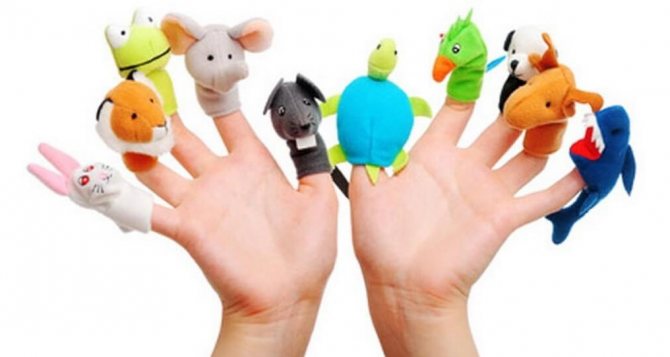
Finger games
Tongue twisters and tongue twisters
Tongue twisters are important for developing diction and teaching a child to speak fully. You can start reading and memorizing tongue twisters from the age of 2-3 years, because this:
- Effective training for articulation of sounds.
- Acquiring correct speaking skills.
- Correction of speech defects.
- Effective fight against tongue-tiedness.
- Formation of phonemic hearing, since in order to say a phrase, it must be heard correctly.
Pure sayings for staging speech and improving diction can be divided into 2 groups. Poems that repeat a specific sound that requires practice. These are poems in the first lines of which repetitions of syllables are used, due to which the necessary sound is practiced. The end of the poem is simply a phrase in rhyme, maybe completely meaningless.
Games and tasks
To develop speech, you can use any topics in your notes, but the level of complexity of vocabulary should correspond to the age of the child. For example, the task “Mushrooms” is often used. The child should be affectionately called “Oiler - Oiler, Volnushka - Volnushechka, Lukoshko - Lukoshechko, Toadstool - Toadstool” and so on.
Note! It is useful to supplement the tasks with didactic games.
The game “Tell Me a Story” will do. You need to take any object images, 30 pieces, place them in front of the baby and offer to come up with a fairy tale. Each player takes a picture and writes 1-2 sentences using the chosen picture. And so one by one, it turns out to be an interesting plot. You have to play until the pictures run out.
Speech therapy exercises for children every day
The most difficult moment is to interest a preschooler. And this is a very responsible process. After all, it is problematic to sit down a hyperactive child. In general, it is not necessary to sit him down; you can combine business with pleasure - practice lessons when the baby is playing in his hut or jumping on the bed.
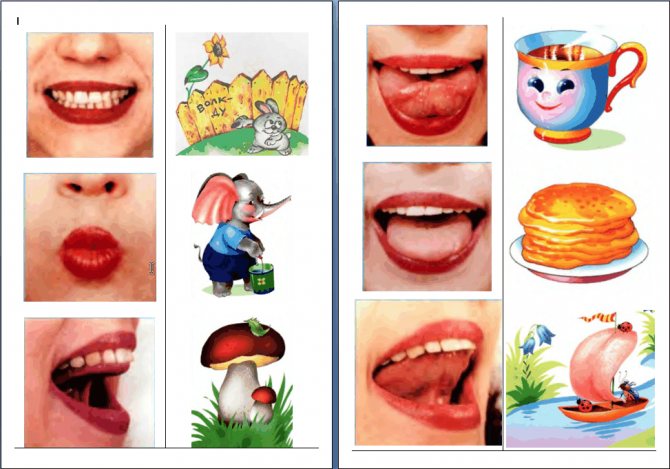
Articulation gymnastics
Classes in the form of a game will definitely give results, and the parent will not get tired, and the baby will learn the material without tears or screams - there must be contact, not hostility. Speech therapy gymnastics for the development of a child’s speech should be prescribed by an experienced speech therapist.
Finger games
Thanks to finger games, the baby's fine motor skills are developing. The result of the lessons is achieved if you work with the child every day for 5 minutes. The game “Flower” will be useful. The fingers should look up and be closed together. You need to make a bud from your half-bent palms by pressing your fingers. When the composition is assembled, you need to say a quatrain, making movements on every second line: The sun is rising - The bud is blooming (spread your fingers to the sides, keeping the bottom of your palms closed). The sun sets - The flower goes to bed (put your fingers back).
What to do if the child is 4 years old and does not speak
Articulation practice
Articulatory gymnastics are exercises for the tongue and lips. They are the basis for the process of pronouncing sounds. If the tongue is poorly developed, the child will speak poorly and his speech will be unclear. You need to practice in front of a mirror.
Interesting! One of the popular techniques is “Smile”. Actively stretch your lips, smile, but do not unclench them. You should keep your smile for half a minute.
Games for developing full-fledged hearing, imitation of sounds, logori - a game for developing hearing. To play you will need a mini bell and a free room. The baby stands blindfolded, while the parent carefully moves around the room, ringing a mini-bell in different places. The child must, without turning around, determine with his hand where the ringing is.
To play onomatopoeia, you need to take any plot drawing. For example, in the image, a boy is carrying a car: “Misha pulls the car and says “beep.” Let's help him! Beep!" You need to help the baby, move with him, repeating the path of the car, controlling articulation.
Logorhythmics are exercises that combine movement, speech and music. Children love Logorhythmics; they find it fascinating. First, the parent reads a poem and demonstrates movements, all this is accompanied by musical accompaniment. Then the child repeats everything independently or with his mother.
Recitation of poems and tongue twisters
Recitation helps you quickly understand a poem or tongue twister and memorize the work. You need to turn on your imagination and “dive headlong” into the plot. Try to transport yourself to the time described in the poem. Liven up the lines.
Advice! It is important to help the child imagine what is happening, talk about the village in which the little boy lived, about how hard it was for his father to provide for his large family, about the bitter cold.
When the text is visualized, the baby will accept it more easily and will be imbued with emotions. And emotional things are remembered much faster.
Advice from speech therapists on how to properly conduct classes at home
Correcting pronunciation is difficult, everything takes time. In one lesson, teaching a child to speak clearly and distinctly, as well as to use complex words, is unrealistic. In any activity, it is important to practice regularly.
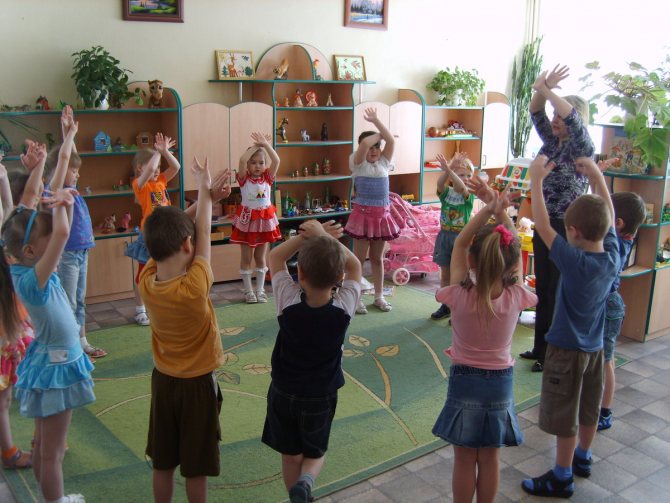
Logorhythmic lesson option
Mistakes are part of the learning process. You need to be patient, praise your child even for minor successes, and support him if something doesn’t work out. If you yell at a child, he will not speak better; on the contrary, he may withdraw into himself, which will aggravate speech problems. It is useful to exercise for 5 minutes every day, and not once a week for 1.5 hours. Initially, you can practice for 3-5 minutes, eventually increasing the time to 15-20 minutes twice a day.
Speech therapy classes, organized correctly, will help correct speech problems. It is important to follow the recommendations of an experienced speech therapist.
Individual speech therapy lesson in the senior group “On a journey with a mouse”
Topic: Automation of the sound /Ш/ in syllables, words, sentences, pure phrases.
Goals: Correctional and educational: To consolidate articulation and isolated pronunciation of the sound /sh/. Continue to teach correctly, pronounce the sound /sh/ in syllables, words, sentences, and pure phrases. Continue learning to identify the presence of a sound in a word. Learn to use plural nouns, date cases in speech.
Correctional and developmental: Develop general, fine, articulatory motor skills. Develop inflection skills. Develop visual, figurative memory, thinking, attention. Develop breathing. Develop phonemic hearing, sound analysis and synthesis skills, and coherent speech.
Correctional and educational: Develop self-control over speech.
Equipment: subject pictures with sound /Ш/, “Snail’s Paths” manual, sound symbols, map, toy mouse, cards for articulation gymnastics, pencil, envelope with a letter.
Progress of the lesson:
1. Organizational moment. Riddle about the mouse. Gray - loves cheese. (Mouse).
2. Topic of the lesson. A mouse came to visit us, and she invites us on a journey. She brought us a map, look, it will help us not to forget anything or get lost. Shall we help? The path is not short, I suggest you gain strength.
3. Articulation gymnastics. All the guys in order Do exercises in the morning Our tongue also wants to be like kids.
I decided to do exercises with the kids
1. Ex. "Proboscis". 2. “Cup” 3. “Painter”. 4. "Sail".
Now let's breathe in the magical power. Inhale through your nose - with your mouth closed, exhale through your mouth only - with the sound /Ш/. Well, we're all ready, let's hit the road.
4. Acoustic-articulatory characteristics of sound. Where is our map? What's the first thing on our way? Little house. The house where the sound /Sh/ lives. Let's remember what we know about this sound?
Characteristics of sound: tongue at the top, “cup”, sponge “tube”, warm air stream, dull, hissing, consonant.
Exercises "Loud-quiet".
Ears on the top of a baby mouse's head.
The mice sewed fur coats and shawls. The little mice did not bother them.
5. What is painted near the house? Track. The mouse runs along the path, rustling its tail. How does she rustle? (SH-SH-SH-SH). Let's go with the mouse and rustle. I will begin the word, and you will finish it. We…; Du...; Kama...; Small….
6. Look, where do we go next? What's in our way? Reeds. The mouse loves to listen to them rustle. Listen to the reeds and rustle like them:
Sha-shu-sha. Shi-sho-shi. Shu-sha-shu Ish-osh-ish Shi-sha-shu. Sha-shi-sho. Ash-osh-ash Ush-ash-ush (raise your arms up, swing your arms above your head and pronounce syllable chains).
Who's hiding in the reeds? Duck. The duck got scared and flapped its wings. (Let's show how a duck flaps its wings).
Shi-shi-shi, shi-shi-shi The reeds rustled
She-she-she, she-she-she This duck is in the reeds
Sha-sha-sha, sha-sha-sha, swim out of the reeds
Check-check-check, check-check-check There's no duck in the reeds
Shi-shi-shi, shi-shi-shi What are the reeds whispering to us?
7. We’re great, we’re moving on. What's next on the map? Look, little logs, we need to build a bridge and cross the river. You need to select only those pictures whose names contain the sound /Ш/. Hat, frog, cup, hut, car, pear.
The child names words. Now let’s walk through the words, the child names the word and walks through. The speech therapist turns the pictures over.
8. We arrived on the map, where? To the store. What did the mouse buy in the store? I'll start, and you continue.
The mouse bought a lot………..(showing pictures – fur coat, cherry tree, wardrobe, hat).
For example: the mouse bought a lot of fur coats.
9. Andryusha, how are we going to return home? And we will return along our familiar bridge. Please remember what was shown in the pictures. (Working with symbols).
10. Look, next is Ulitka’s path. Let's determine the position of the sound /Ш/ in words - at the beginning, middle, and end of the word. Puck, chess, pillow, cannon, tumbler, lily of the valley.
11. And then we’ll go along the shortest route. On the map it is indicated by a barely noticeable line. We will need a pencil. But before we get to work, let’s play with our fingers a little.
I roll the pencil in my hands, I twirl it between my fingers, I will certainly teach every finger to be obedient. (game with a ribbed pencil). Draw along the dotted line on the map.
11. Further along the map is a letter. What is written here? Write poetry and you will find out where the treasure is.
I'll start, and you'll have the last word.
Wears a bright comb Our cheerful...cockerel.
Here is little Gray mouse running.
The tires rustled quietly. It's a car coming towards us.
The mouse washes itself in the shower, washes its tail, washes its ears.
12. Summary. Well, that's what we have here. Delicious, sweet...(chocolate). Well done guys. Good help for the mouse. What sound helped us? Now take the mouse, the treasure, and go to the group, tell us where you were.
Methodical manual used: “Individual speech therapy classes with preschoolers” by Borisova E.A.
Author of the material: Rybakova Elena Vyacheslavovna

